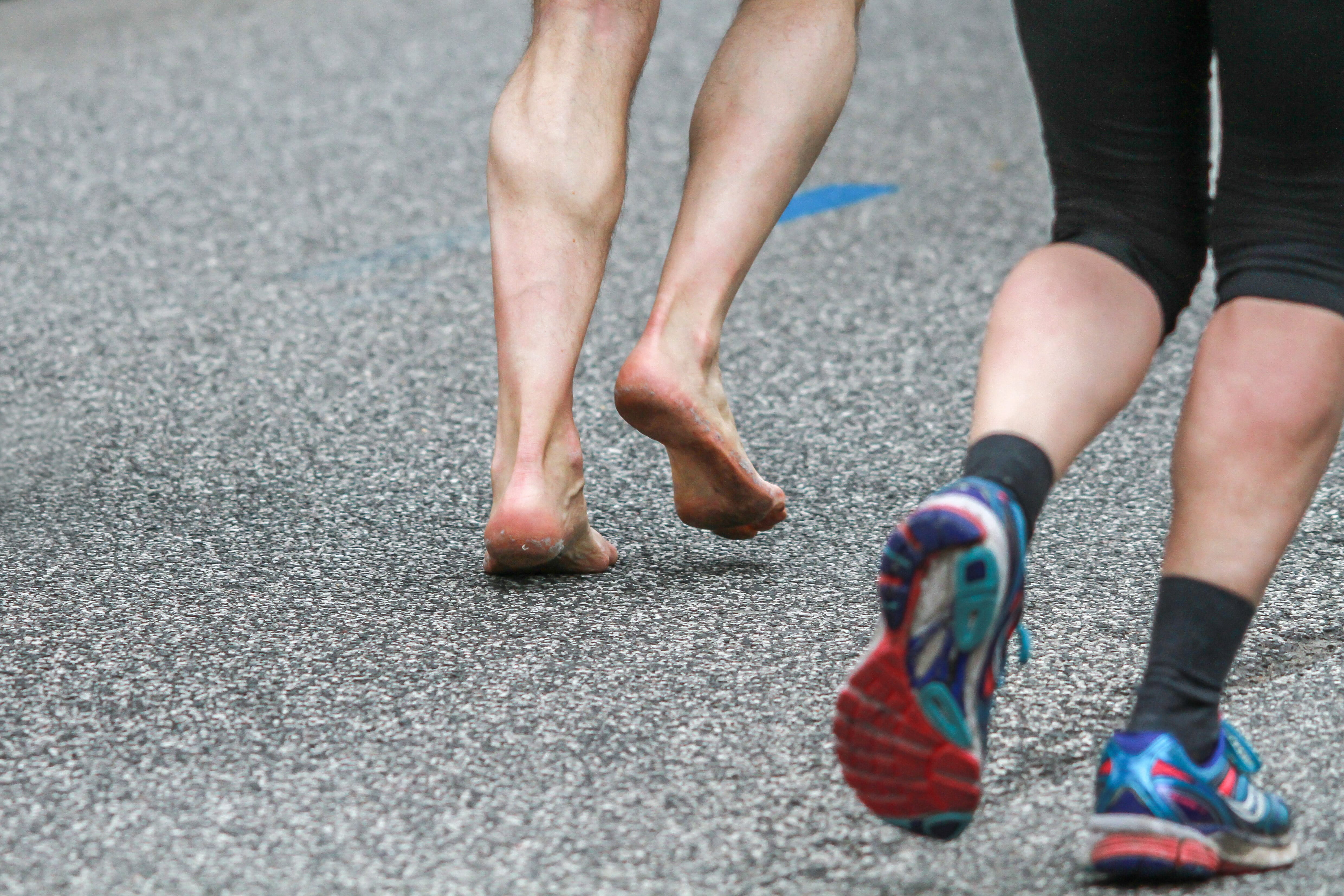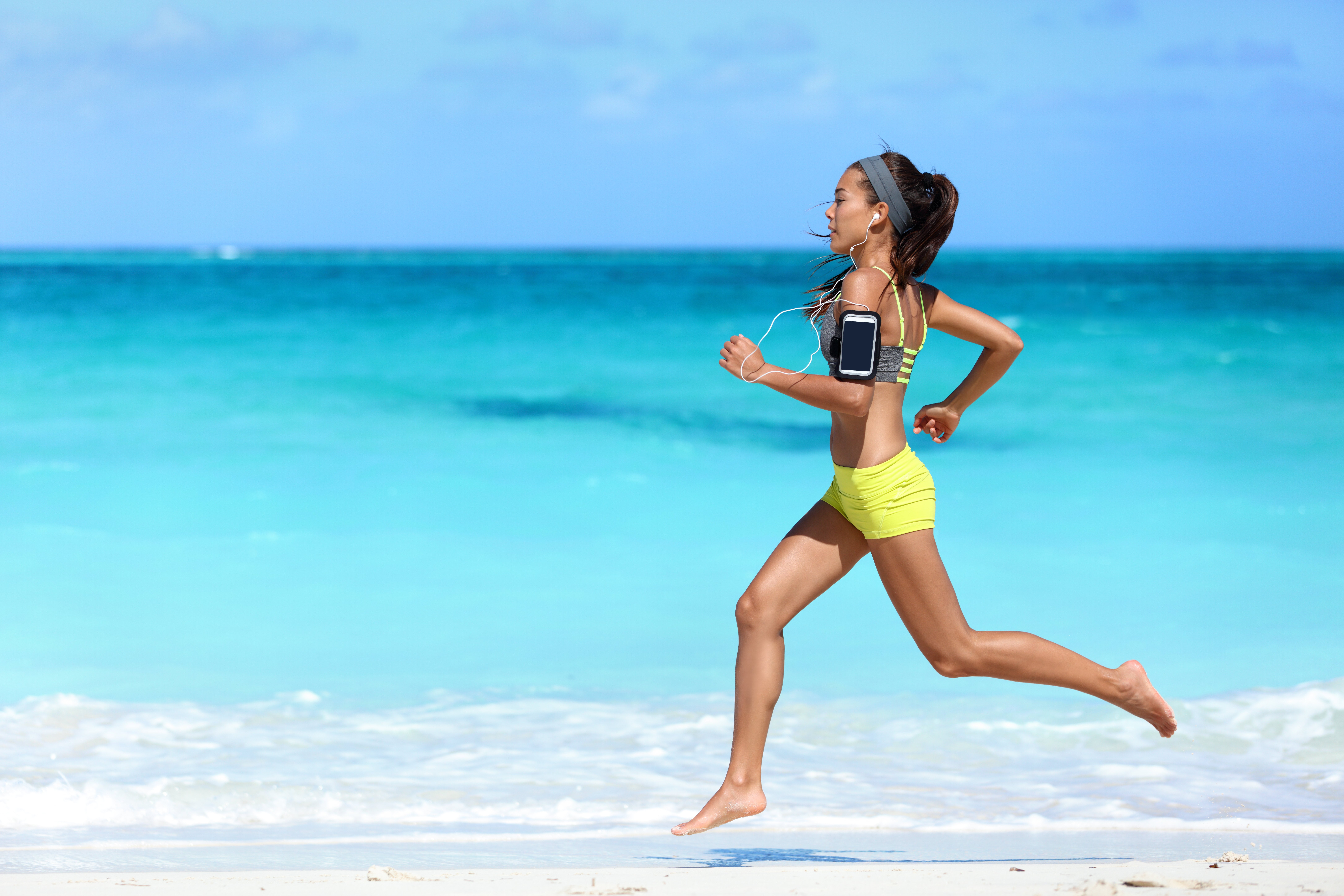Barefoot Running: Is It Good for You? Expert Advice & Training Tips
Apr 02, 2024
(Credit: Adobe Stock)
Barefoot running has been a topic of hot debate over the past two decades. It might seem like an obvious choice, depending on your school of thought—or perhaps the exact opposite. There’s evidence and considerations on both sides of the conversation. Let’s take a look into this way of running and why it may or may not be a good option for you in your training!
Running Shoes vs. Barefoot Running
Running shoes are a relatively new invention, and only really reached widespread popularity when Nike started to innovate the space in the 1960’s and 70’s. Since then, shoe technology has changed drastically, and in that interim period it would be contrarian to wear anything but a pair of athletic shoes while running…that is at least, until recently.
Barefoot running and minimalist footwear received notable attention following the release of Christopher McDougall’s best selling book, Born to Run, in 2009. This book sparked a cultural shift in the conversation around running shoes and the negative effects they seem to have on our bodies. The book coincided nicely with the popularization of Vibram Five Fingers.
Barefoot running and walking characterizes our history as humans. We’re not born with shoes on, and even ancient peoples used very minimal protection beneath their feet (if anything at all). This begs the question as to how running shoes have distorted a function we’ve been evolutionarily fine-tuned to do. Humans are, in fact, the best distance runners in the world.

(Credit: Adobe Stock)
Shod Runners vs. Barefoot Runners
There have been growing concerns about the contribution of running shoes to running related injuries. People run differently depending on whether they’re wearing shoes or running barefoot…
…are these differences beneficial?
…what are they, exactly?
…how do they change the structure of the foot?
Keep reading to find out!
Foot Strike
If you’ve never ran barefoot before, you’re going to notice some (quite remarkable) things upon giving it a try. Firstly, if you’re used to running in traditional running shoes, you’re likely a heel striker, meaning you land first on the rearfoot/heel. Barefoot runners tend to land with a mid-forefoot strike, and you’ll naturally start to do this when you remove your shoes.
This actually makes sense just by looking at the foot. The heel is a round ball of padding around the hard heel bone. The arch and ball of your foot forms a nice wide padded platform. Which one do you think would be more stable and consistent for landing on? On top of that, it hurts tremendously to land on the heel without shoes on, which is important to note.
Changes in foot strike are accompanied by changes in force absorption, production and dispersion. Barefoot runners land with more plantar flexion, i.e. their toes pointing towards the ground. This preps them for landing and lowers impact/ground reaction forces. Greater activation in the calves also follows, which lessens the load on commonly injured structures like the knee.

The male runner on the left is about to land with a heel strike. The woman on the right is preparing to land with a mid-forefoot strike. (Credit: Adobe Stock)
Foot Musculature
You have 29 muscles that directly influence the foot; 19 intrinsic muscles (i.e. actually in the foot) and 10 extrinsic muscles (i.e. muscles originating outside the foot but cross the ankle joint to act on it). Several of these muscles make up the arch of the foot, which is an area associated with issues and pain for many people (runners and non-runners alike) across the globe.
The body does not waste energy, this is important to understand. If it doesn’t need something it gets rid of it. Refer to what we mentioned earlier, you are not born with shoes on. What does that mean? It means that the human foot is born with everything it needs to support itself, absorb impact, propel the body, etc. What else promises to do these things for us? Shoes.
Barefoot running strengthens the foot; the muscles become thicker and have a greater cross sectional area. An arch gets stronger when you push down on it, which is why bridges and entryways are built out of them. Pushing up on, or supporting, an arch makes it weaker. Running shoes don’t fix problems in the feet, they make them worse. More support = less strength.

(Credit: Adobe Stock)
Running Economy
Running economy refers to the energy cost or efficiency of an individual's running stride at a given pace. It is a measure of how effectively a runner uses oxygen and energy to maintain a certain speed or distance. It is the advertisement of several running shoe companies that their shoes will help you improve these metrics, but is that true?
The research seems to lean in favor of the barefoot runners. When people run without shoes they tend to use less oxygen, have lower rates of perceived exertion, and maintain a lower heart rate than comparative subjects who are running with shoes. This suggests that running barefoot is more efficient and economical, in general.
Several things could account for this. The plantar flexed position that prepares a barefoot runner to land softens the impact they have to absorb, reducing energy costs. There is also higher ankle compliance in barefoot runners, meaning more ability to absorb force from the ground. Shorter strides and higher cadence rates also seem to contribute to their efficiency.

(Credit: Adobe Stock)
Is It Good for You to Run Barefoot?
All of the above information points to yes—but it’s not that simple. The truth is that much of the research around barefoot running has been performed in healthy, athletic subjects. Most of the general population, and certainly runners, have grown up wearing running shoes. Abruptly switching to barefoot running could spell catastrophe in terms of injury.
Long-term injury risk is lower with proper adaptation to running without shoes or in minimalist style footwear. Short-term injury risk is high, however, because there is going to be increased activation in the foot and lower leg that your body is likely not prepared to deal with. If you’re going to go down this path, it’s important that you do it cautiously.
How to Start Running Barefoot
Running already has a high prevalence of injury, and making sudden changes to your stride, footstrike and/or the cushioning beneath your feet has the potential to skyrocket that rate even higher. Take these steps into consideration when beginning your barefoot running training.

(Credit: Adobe Stock)
1. Start with walking
You have to walk before you can run, and making this transition starts the whole process over from the beginning. To avoid overloading your body, slowly start to introduce more barefoot walking, either on a treadmill or around the house, into your daily regimen.
2. Use soft surfaces
Grass, sand and dirt paths are all your friend. Progress your barefoot walking to the outdoors by utilizing barefoot-friendly surfaces. It is going to take some time to acclimate to all the new stimuli; your feet will be soft and weak from being in shoes their whole lives.
3. Run/walk on soft surfaces
Just like if you were a beginner runner, start to build up your tolerance on soft surfaces by combining slow jogs with walking. Gradually build pace and increase mileage as time goes on. These can be used as active recovery days to your normal shod running training.
4. Integrate harder surfaces
When jogging on the softer surfaces becomes more tolerable, deploy the tactic of controlled regression (i.e. regressing in some aspects to progress in others), and start to add barefoot walking sessions to harder surfaces like concrete and asphalt.
5. Barefoot running
If you’re able to gradually progress through these stages, you will eventually reach the point of barefoot running freedom. Run barefoot on any surface at any time. You’re likely to be more efficient whether you choose to run shod or barefoot going forward, as a result.

(Credit: Adobe Stock)
Other Benefits & Final Thoughts
Running barefoot or wearing minimalist shoes allows the foot to stretch out and maintain its pliability. It’s not restricted by the form of a shoe not specifically designed for you, and is allowed to function freely. Furthermore, shoes wear out (which can contribute to running injury), but your feet adapt. With the right training, your body has everything it needs to succeed.
You might be asking yourself, “If running barefoot has all these benefits, why don’t professionals do it?” The truth is that many of them did while growing up, but now make their living being sponsored by big running companies who pay them to wear their shoes. Their foot strike and structural integrity was often built by running barefoot in their formative years.
Running shoes are not the devil, they have made their mark on the world and aren’t going anywhere anytime soon. Most of us grow up in them and adapt our running styles accordingly. It’s not necessarily a problem, and is oftentimes a benefit. While the debate on this topic can get prickly, we encourage you to make decisions based on what’s right for you—not somebody else.

Run Pain-Free With Dynamic Runner!
We hope you enjoyed learning a little bit about barefoot running. If you’d like a platform designed by runners for runners that includes daily stretching, mobility, strength training and injury prevention programs, consider joining us here at Dynamic Runner! Join thousands of athletes worldwide training to run pain-free. Sign up for a 7-day free trial by clicking here!
Written by Eric Lister – Certified Personal Trainer & Corrective Exercise Specialist





